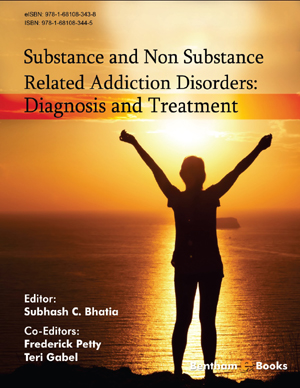Abstract
Inhalation of volatile hydrocarbon-based substances produces intoxication and pleasurable effects. Use of inhalants usually starts in adolescence ages 12 to 17 often precedes use of tobacco, alcohol and illicit substances. It decreases gradually after the age of 20 years. These substances are lipophilic, cross the blood-brain barrier rapidly and cause CNS depressant effect mediated through gamma-aminobutyric acid (GABA) agonism or NMDA receptor antagonism. In addition to CNS toxicity these substances also have significant toxicity to other body organs like liver and kidneys. Prolonged use may lead to neurocognitive disorders, anxiety and even psychosis. Use of inhalants can lead to serious medical complications such as cardiac arrhythmias and seizures. Sudden heavy sniffing may lead to death due to asphyxiation. Intoxication syndrome includes euphoria, excitation, disinhibition, slurred speech, memory impairment and delirium and coma with high doses. Sudden discontinuation of inhalants may lead to a withdrawal syndrome similar to alcohol. However benzodiazepines, other CNS depressants and adrenergic drugs should be avoided. Psychosocial interventions are valuable.
Keywords: Asphyxiation, Choking, Cleaning fluids, Deodorant spray, GABA, Gases, Gasoline, Glues, Hair sprays, Nail polish remover, Neurotoxicity, Nitrites, NMDA, Spray paints, Volatile hydrocarbons.






















